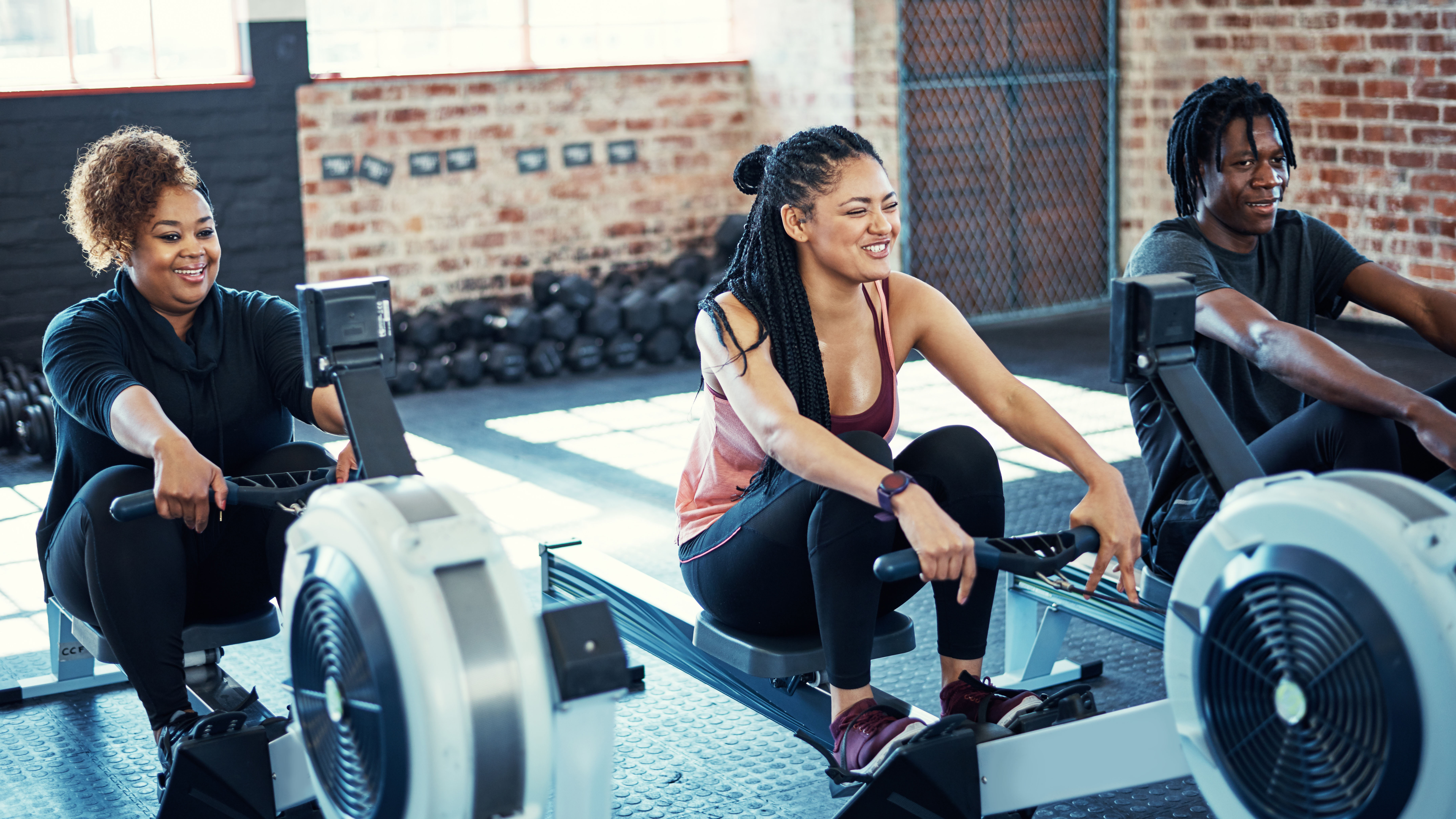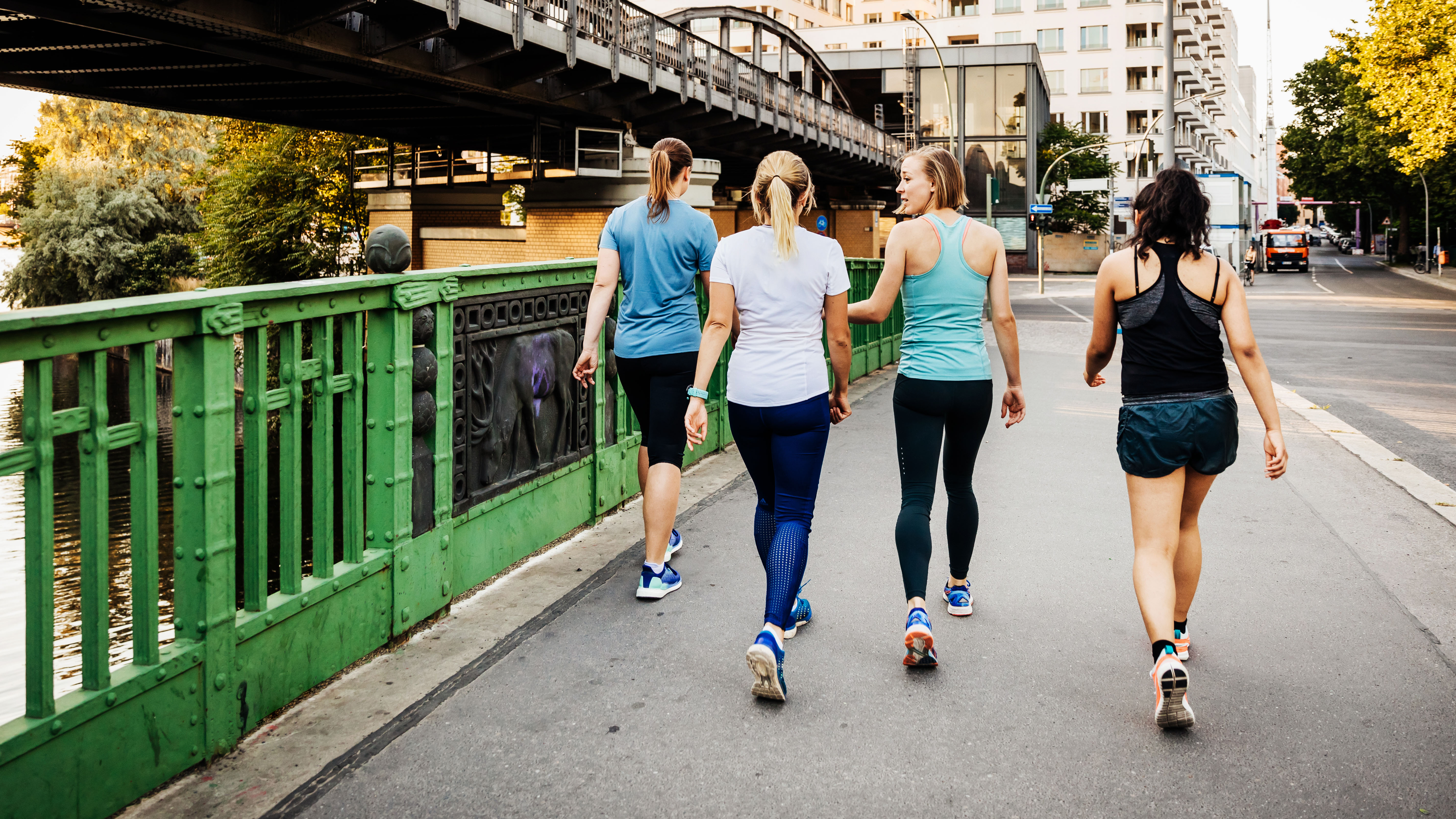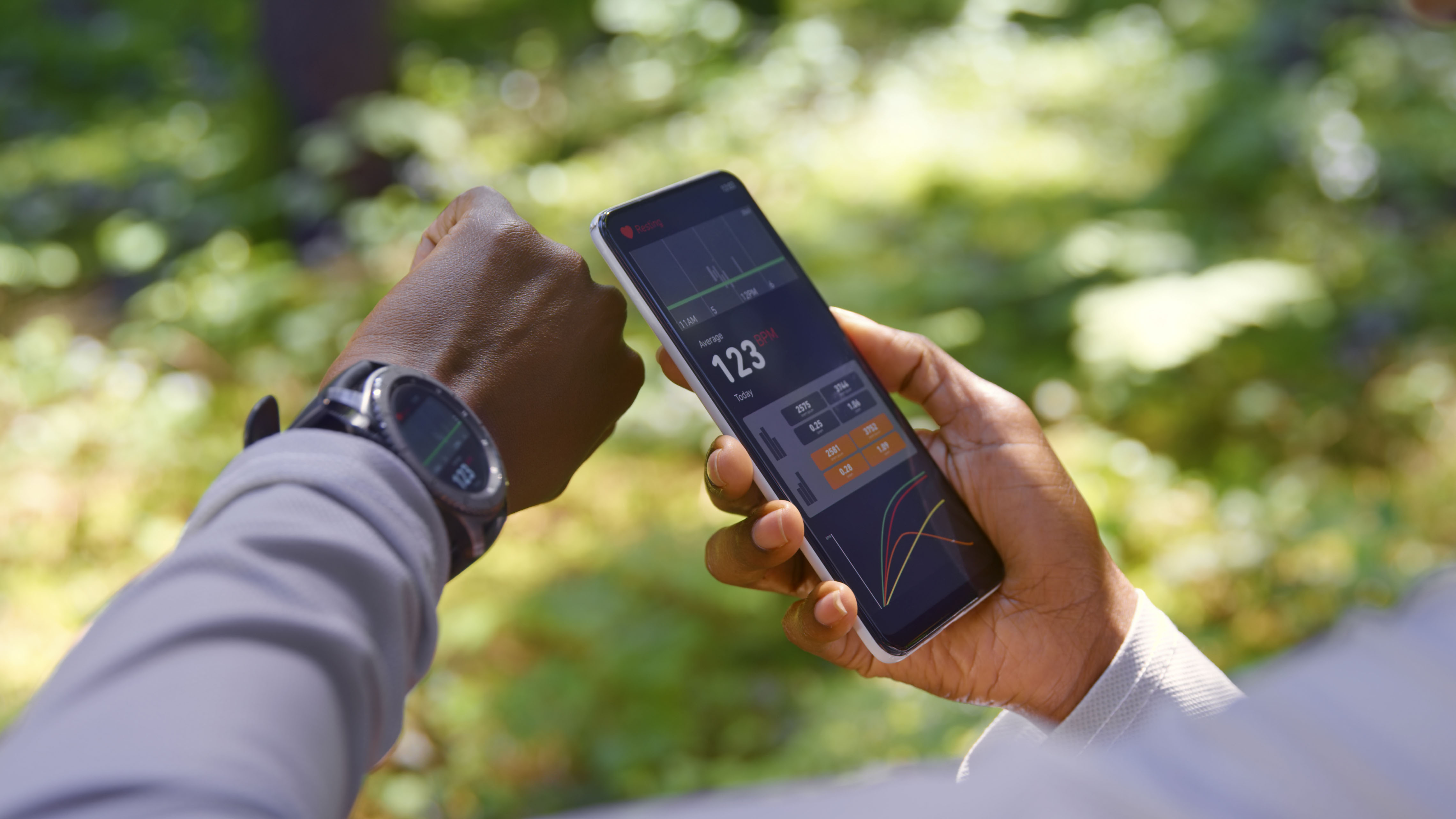Aerobic exercise: Here's what it really does to your body
Your 101 explainer on everything to do with aerobic exercise

Personal trainers and exercise physiologists often talk about aerobic exercise and they may casually refer to it as cardio. The latter, however, is a catch-all term that more closely refers to any form of exercise that increases your heart rate. Aerobic exercise, meanwhile, is any form of exercise that uses oxygen (aerobic actually meaning "with oxygen”).
Whether you’re hot pedaling on the best exercise bikes or swimming laps at the local pool, your heart rate and oxygen intake will increase, occurring simultaneously while being technically different. Some exercises such as weightlifting or strength training do not count as aerobic (or cardio), as the oxygen intake (and heart rate increase) is not sustained for long enough to be classed as an aerobic exercise.
But what happens to your body during aerobic exercise, beyond the increase in oxygen? Answering that is exercise physiologist Tom Cowan but we also look at the most effective aerobic exercises while sharing some tips about how you can build your aerobic exercise capacity.

Tom is a registered Clinical Physiologist with The Registration Council for Clinical Physiologists (RCCP). He is accredited by both the British Association for Cardiovascular Prevention and Rehabilitation (BACPR) and the Register of Exercise Professionals. Tom has a First Class Honours degree in Sport and Exercise Science from Loughborough University, is a Wright Foundation specialist in Cancer Rehabilitation and is BACPR qualified in Cardiovascular Prevention and Rehabilitation.
What happens to your body during aerobic exercise
So how exactly does your body react to aerobic exercise, and how does it trigger an increase in oxygen intake?
“During aerobic exercise, our muscles contract repeatedly and in order to do so they require the blood to deliver a constant supply of oxygen to them, and at an increased rate to what they demand at rest,” explains Cowan.
“Our breathing rate increases in an attempt to get more oxygen into the lungs and into the blood, and our heart rate increases to pump more blood and oxygen to the working muscles. The muscles then extract the oxygen from the blood and utilize it with the glycogen and intramuscular fat stored within the muscles to produce energy for muscular contraction via the aerobic energy system.”

During aerobic exercise, our body will also divert blood away from other organs such as the stomach and prioritize delivery to the working muscles, which further increases the blood and oxygen supply to the muscles.
Get the world’s most fascinating discoveries delivered straight to your inbox.
Regularly performing aerobic exercise over time will result in physiological adaptations that will get your body more comfortable with this process and consequently improve performance and endurance.
“Some of these adaptations include an increased left ventricular size, which means that the heart can pump out more blood and oxygen with each heartbeat,” says Cowan. “Combining this with an increase in heart rate during exercise means that the heart has a greater capacity to pump more blood and oxygen and deliver it to the working muscles per minute (increased cardiac output) than previously.
“Other adaptations include an increase in blood volume which again allows greater delivery of blood and oxygen to the working muscles. At the muscles, adaptations include increased myoglobin content, a protein which transports oxygen from the blood to the mitochondria (where aerobic energy production occurs) and mitochondrial density increases as a result of aerobic training, meaning that the muscle has a greater capacity for producing energy for muscular contraction aerobically.”
- Read more: Aerobic vs anaerobic
The most effective aerobic exercises
When judging the most effective aerobic exercises you’re obviously going to be looking for those that spur on these adaptations — which themselves come from that simple act of your body upping its need for oxygen. So what you need is an exercise that places a greater demand on the cardiovascular system, raising your heart rate to supply the most amount of muscle with oxygen.

Under this criteria, Cowan points towards exercises that involve a greater muscular involvement by calling into account both your upper and lower body — rowing is a good example.
On the other hand, forms of exercise that just focus on the lower body — cycling, say — or the upper body will be less effective.
Whatever aerobic exercise you choose though, Cowan stresses the need for a pre and post-exercise routine. “With heart rate increasing during exercise, it is important to perform a warm-up before exercise which gradually increases your heart rate from resting levels and following exercise it is necessary to perform a cool-down which gradually reduces your heart rate towards resting levels.”
Measuring aerobic exercise capacity
The most common test of someone’s cardiovascular endurance (and thus their ability to perform any aerobic exercise) is a cardio-pulmonary exercise test (CPET). This measures your VO2max and other physiological measurements.
“It can also help to inform your own training zones,” says Cowan, “to help to better prescribe your cardiovascular training and to make it more effective. You can then re-perform this assessment after several weeks to assess your improvement in cardiovascular endurance.
“You can also monitor your resting heart rate which can provide an indication of your level of cardiovascular endurance, as your resting heart rate will reduce as your cardiovascular endurance improves but keep in mind that heart rate can be affected by other factors such as stress and the menstrual cycle.”
How to build your aerobic exercise capacity
When working on building your aerobic exercise capacity it’s important, according to Cowan, to set goals early on and expect gradual progression, with tools like the Couch to 5K app perfectly designed to help you move forward in this way.
“To improve your aerobic exercise capacity, you should perform exercise which raises your heart rate above rest on a frequent basis,” says Cowan. “This may be cardiovascular exercises such as cycling, swimming, or running, and if you are new to a particular activity or to exercising generally then it is always recommended that you check with your doctor that the exercise is suitable for you.”

It’s also important to find something enjoyable to do. After all, a 2012 study published in the Annals of Behavioral Medicine found that peoples’ “affective response” (a measure that captures mood and overall psychological state) during exercise tracked with their physical activity levels, so if you’re loving the aerobic exercise you’ve picked you’re more likely to continue pursuing that sport and building your aerobic capacity.
Don’t forget to mix up your aerobic exercise training, though, and not just focus on high-impact, weight-bearing exercise, like running, which can put a lot of stress on your joints. Finally, give yourself a rest day every now and again.
“Cardiovascular exercise can make you feel good and it is easy to get hooked on exercising and wanting to perform cardiovascular exercise daily,” says Cowan, “but do allow yourself rest days and adequate recovery, and avoid getting carried away and building up too quickly which could lead to injury.”
This article is not meant to offer medical advice and readers should consult their doctor or healthcare professional before adopting any diet or exercise regime.
A former commissioning editor at men’s lifestyle site FashionBeans, and lifestyle writer at The Telegraph, Richard takes pride in his ability to craft engaging reads on pretty much any topic imaginable. He is currently editor of inForm, the in-house magazine of supplements brand Form Nutrition, and specialises in easy-to-follow guides within the health and fitness space. Along with these roles, Richard also has bylines with The Evening Standard and The Independent.



